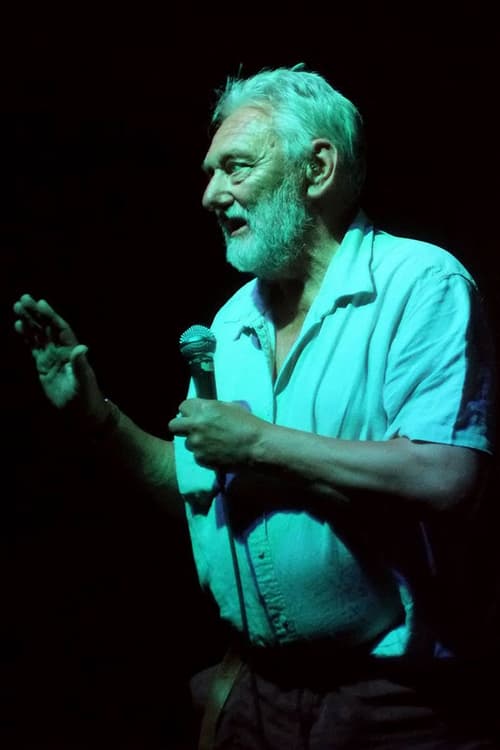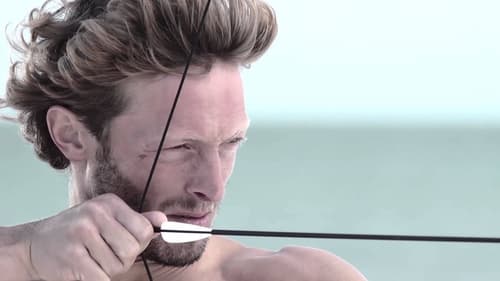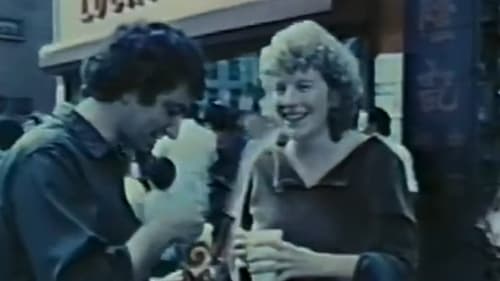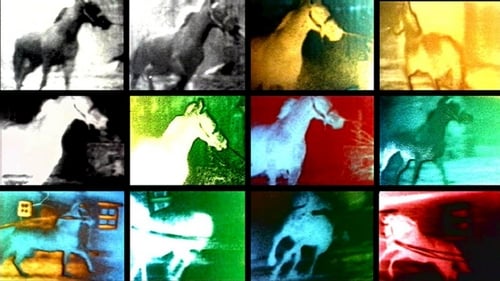
Malcolm Le Grice
출생 : 1940-05-15, Plymouth, England, United Kingdom
약력
Born in May 1940, Malcolm Le Grice started as a painter but began to make film and computer works in the mid 1960's. Since then he has shown regularly in Europe and the USA and his work has been screened in many international film festivals. He has also shown in major art exhibitions like the Paris Biennale No.8, Arte Inglese Oggi, Milan, Une Histoire du Cinema, Paris, Documenta 6, Kassel, X-Screen at the Museum of Modern Art, Vienna, and Behind the Facts at the Fondacion Joan Miro, Barcelona. His work has been screened at the Museum of Modern Art, New York, the Louvre Museum in Paris and the Tate Modern and Tate Britain in London and is in permanent collections including: the Centre Georges Pompidou, Paris; the Royal Belgian Film Archive, Brussels; the National Film Library of Australia, Canberra; German Cinamatheque Archive, Berlin; Canadian Distribution Centre, Montreal and Archives du Film Experimental D'Avignon. A number of longer films have been transmitted on British TV, including 'Finnegans Chin', 'Sketches for a Sensual Philosophy' and 'Chronos Fragmented'. His main work since the mid 1980's is in video and digital media and includes the multi-projection video installation works 'The Cyclops Cycle' and 'Treatise'.
Le Grice has written critical and theoretical work including a history of experimental cinema 'Abstract Film and Beyond' (1977, Studio Vista and MIT). For three years in the 1970's he wrote a regular column for the art monthly Studio International and has published numerous other articles on film, video and digital media. Many of these have been collected and recently published under the title 'Experimental Cinema in the Digital Age' by the British Film Institute (2001).
Le Grice is a Professor Emeritus of the University of the Arts London where he is a collaborating director with David Curtis of the British Artists Film and Video Study Collection.

"This installation or performance work puts my own earlier film of the Mona Lisa (1973) through another stage of transformation – my own irretrievable self of some 34 years ago is now also part of the subject I first saw the ‘actual’ ‘Mona Lisa’ when I was about thirteen. Of course I had seen dozens of reproductions in books and postcards by then and the popular mythology of the enigmatic smile was already well engrained in my mind. My strongest impression, as I recall, was how small and unsurprising it was – a heavily protected cultural icon – no longer really a picture – and I was much more excited by the painting of the distant landscape than by the face. My own ‘version’ of ‘la Giaconda’ was never an homage, nor like Marcel Duchamp’s ‘L.H.O.O.Q’, an attack on its cultural power. Instead it came from a fascination with change and transformation – maybe also with arbitrary appropriation." Malcolm Le Grice

Director
Malcolm Le Grice - 3D.

Director
"3D Video SBS (side by side) format. For viewing on 3D monitor or television" -Le Grice

Director
An impromptu portrait of Jonas Mekas shot at the Serpentine Gallery, London on the occasion of a celebration of his 90th birthday. All made in a single take whilst Mekas videos Mike Figgis playing Flugel horn and Rosey Chan plays piano.

Director
An anthology of one-minute films created by 60 international filmmakers on the theme of the death of cinema. Intended as an ode to 35mm, the film was screened one time only on a purpose-built 20x12 meter public cinema screen in the Port of Tallinn, Estonia, on 22 December 2011. A special projector was constructed for the event which allowed the actual filmstrip to be burnt at the same time as the film was shown.

Director
[Originally] six virtual screens matted into three Blu-ray projections. First exhibited at the Centre Multimedia Gantner in 2011, then on an immersive 18 metre curved screen at Tate Britain in 2012. It explores an interplay between abstracted colour, personal imagery and war related newsreel, seeking a coherent set of linking themes. Perhaps an homage to Dziga Vertov. A single screen version was made in 2013 and shown in Millennium, New York and at Tate Britain.

Director
In October 2009 I did a show in Prague. I returned to the Kafka house of my ‘Benefit of Mr K’ but found the whole street and Castle area had become a tourist trap – so I wandered into the back-streets at the bottom of the hill and found a little local bar for a plate of sausage, mustard and strong brown bread. Intending to drink some wine I noticed that Absinthe was included in the drinks list so ordered it. I admitted to the bar-keeper that I had never had it before and he showed me how it should be mixed and flamed with sugar – and I recorded with my pocket video camera. With a little gesture to Picasso and Degas, I became the Absinthe Drinker.

Director
Self Portrait looks for an approach to a specific relationship between the duration of a work and material conditions in the projection as did William Raban in the film-performance Take Measure. The main difference is that Raban’s work was made when cinematic media had distinct physical properties linking medium directly to image - this self portrait recognizes that there is no such simple materiality for cinema following the emergence of digital processes. Instead the work takes a conceptual base – the speed of light and the time taken for light to travel from the sun to illuminate objects on earth –thus the duration of 8 minutes 20 seconds.

Director
"My experience of Monet’s large-scale panoramic paintings of his water lily garden when I was about 14 years old became a crucial artistic memory. There have been a number of versions of the material I shot in about 1984 of water lilies and reeds in a pond. This [...] is the latest version and is part of work on a larger project ‘Treatise’ still in process." -MLG

Director
A simple event becomes rhythmically complex through changes of speed and multiple superimposition. The title refers to the inevitable inclusion of detailed meta-data in all future digital recordings – locating for example global time, place, temperature for example.

Director
Originally shot as part of Finnegan’s Chin, this sequence is re-edited as a portrait of performer Jack Murray. It continues the fascination of the forever repeating folk round “I knew a man called Michael Finnegan....”.

Director
Music J S Bach digitally reconstructed by Le Grice.

Director
When I reviewed the video material it reminded me of a theatre performance which I recalled as “A Lecture to an Academy”, given by Tutte Lemkow at the Arts Lab in Drury lane in 1968. The performance was a translation of Kafka’s "Ein Bericht für eine Akademie". The resulting video work is about the giving of voice - its internal and external experience - the predictive moment before a word and short term memory after it - immediate past and near future mixing with the present/presence.

Director
‘Critical Moment One’ was an un-planned recording of a one-year old boy exploring shells and sand on a beach. Though the boy was my own grand-son, it was never seen as a ‘home-movie’ – the child’s face is never seen and it was shot over his shoulder - as close to his ‘point-of-view’ as I could get. As a young man and as my own children grew up, I was greatly intrigued by the book ‘The Construction of Reality in the Child’ by Swiss psychologist, Jean Piaget. Piaget made an exceptionally close observation of the changing stages of behavior of his own children which provided me with a conceptual framework for my own observations.

Director
Every cheap visual effect in the editing package and a sound track made with free software from a corn-flakes packet.

Documentary about British Art in the 60's produced by the BBC starting with Fraser and Kasmin, moving to the modern sculpture movement lead by Caro largely at Central Saint Martins, and finishing with political and performance art in London.

Director
A digital manipulation exploiting the transcoding ‘mosaic’ of video shot on a train journey from Berlin to southern Germany with Mark Webber. Transformations of selected sequences, - slowed, recolored, compared. New rhythms - slow thoughts inside a train at speed – blurred and fragmented landscape through the window. The sound is produced by frequency manipulation of the train recorded with the video.

Director
Osama Bin Laden – Britain and the USA in Iraq as through television reportage – camera only inches from the screen

Director
An allegory for the passage from being alive to being dead. The cyclops is the one-eyed father - the one-eyed king in the land of the blind - the single lens of the camera - three screens beyond stereoscopy.

Director
This work is the first video version based on the changing colour field film-loop work (Joseph’s Coat of 1973). All the treatments were made by an analogue video mixer combined with re-videoing from the screen exploring different camera angles.

Self
Filmmaker Jonas Mekas films 160 underground film people over four decades.

Director
From the earliest point when I started to make film one of the biggest influence on my way of thinking came from Franz Kafka. In particular the titles ‘Castle One’ and ‘Castle Two’ made symbolic reference to Kafka’s book ‘The Castle’. In this book, like ‘The Trial’ the central fictitious but ‘first-person’ existential character was ‘K’ – clearly in part an oblique but intentional reference to Kafka’s own name. The short video sequence used in ‘For the Benefit of Mr. K’, was shot in the little street in Prague showing the small house in which Kafka wrote ‘The Trial’. The title is also a direct reference to the song by the Beatles. The sound track is a short sequence discovered by my son of the Beatles rehearsing this song in the Abbey Road recording studio.

Director
Colour - Water –Rain – not a water colour – bougainvillea in extreme close-up – touching the lens – swimming pool below in the dark.

Several well-known and pioneering abstract filmmakers discuss the history of non-objective cinema, the works of those that came before them and their own experiments in the field of visionary filmmaking.

Director
An encounter with a small man-made waterfall presented in a triptych format.

Director
Arbitrary Logic, an interactive audio-visual synthesiser was first presented under the working title Osnabruk at the Osnabruk festival of 1987 and later as part of an improvised and computer music performance with Keith Rowe at the London Filmmakers Cooperative, December 1989.

Director
A single performance made at the National Film Theatre against a blank screen – the performer twice leaves the stage on one side, exits the building and re-enters the stage on the other side – the duration was determined by the time it took to walk out of sight around the theatre.

Director
Directed by Malcolm le Grice.

Emily - Third Party Speculation is the second of a ‘domestic trilogy’ exploring the relationship between the restricted camera viewpoint and the construction of documentary narrative. The other two films in the series are Blackbird Descending - tense alignment and Finnegan's Chin - temporal economy. Constructed around the repetition of ‘neutral’ domestic scenes, this film attempts to address the problems of identification in cinema.

Director
Emily - Third Party Speculation is the second of a ‘domestic trilogy’ exploring the relationship between the restricted camera viewpoint and the construction of documentary narrative. The other two films in the series are Blackbird Descending - tense alignment and Finnegan's Chin - temporal economy. Constructed around the repetition of ‘neutral’ domestic scenes, this film attempts to address the problems of identification in cinema.

Director
A brilliantly constructed, melancholic ode to the passing of time by Malcolm Le Grice.

Director
Le déjeuner sur l’herbe is simultaneously perceived from four different camera positions in a work which engages with the pro-filmic in order to question documentation, illusion and the film viewing process.

Le déjeuner sur l’herbe is simultaneously perceived from four different camera positions in a work which engages with the pro-filmic in order to question documentation, illusion and the film viewing process.

Director
"Like all the works I have done which refer directly to another artist, After Lumière… is not directly 'about' the Lumière original. It is the starting point for an investigation. In this case it is an investigation into consequentiality, or at least the significance of sequentiality in the construction of meaning and concept. As such, the film encroaches on 'narrative' cinema, but in a way which treats narrativization as problematic, not transparent." - Malcolm Le Grice

Director
Abstract art film made for gallery exhibition.

Director
Four simple changing colour loops are projected continuously into the corners of a gallery space - a form of site specific film sculpture. film-loop installation, continuous

Director
Illuminated by two blank screens projected from empty slides, four performers read texts drawn from the history of cinema – a dictionary of cinema, the chemical production of film materials and a fragment of a Hollywood narrative film script. The readings are treated as a musical quartet with a gradual superimposition of the four readings on each other. slide-performance

Director
Loops. "A four screen film projection onto four vertically placed screens, which span the gallery space from floor to ceiling. The wall surface is transformed into a rippling column of colour, accompanied by a soundtrack of running water. First shown as part of the Film Action and Installation show at Gallery House, London, in March 1973.".

Director
A white screen marked only by a scratch running across clear celluloid activates an intense perception of projection time. A double-projection work.

Editor
Le Grice no longer simply uses the printer as a reflexive mechanism, but utilises the possibilities of colour-shift and permutation of imagery as the film progresses from simplicity to complexity… With the film’s culmination in representational, photographic imagery, one would anticipate a culminating “richness” of image; yet the insistent evidence of splice bars and the loop and repetition of the short piece of found footage and the conflicting superimposition of filtered loops all reiterate the work which is necessary to decipher that cinematic image. - Deke Dusinberre

Cinematography
Le Grice no longer simply uses the printer as a reflexive mechanism, but utilises the possibilities of colour-shift and permutation of imagery as the film progresses from simplicity to complexity… With the film’s culmination in representational, photographic imagery, one would anticipate a culminating “richness” of image; yet the insistent evidence of splice bars and the loop and repetition of the short piece of found footage and the conflicting superimposition of filtered loops all reiterate the work which is necessary to decipher that cinematic image. - Deke Dusinberre

Producer
Le Grice no longer simply uses the printer as a reflexive mechanism, but utilises the possibilities of colour-shift and permutation of imagery as the film progresses from simplicity to complexity… With the film’s culmination in representational, photographic imagery, one would anticipate a culminating “richness” of image; yet the insistent evidence of splice bars and the loop and repetition of the short piece of found footage and the conflicting superimposition of filtered loops all reiterate the work which is necessary to decipher that cinematic image. - Deke Dusinberre

Director
"This is a two screen film where a full frame colour field slowly changes from blue to towards green over a period of about six minutes. The film has been intentionally scratched providing another layer of content and the source of the sound track. M.L.G. 2004"

Director
Film performance, using a back projection screen as well as several projection sources, including a red and green source close together (requires 3D glasses).

Director
This film is the beginning of an examination of the perceptual and conceptual structures which can be dealt with using pure colour sequences in loop forms with pictorial material. In this case the pictorial material is confined to three landscape locations, and the structure is not mathematically rigorous.

Director
Le Grice no longer simply uses the printer as a reflexive mechanism, but utilises the possibilities of colour-shift and permutation of imagery as the film progresses from simplicity to complexity… With the film’s culmination in representational, photographic imagery, one would anticipate a culminating “richness” of image; yet the insistent evidence of splice bars and the loop and repetition of the short piece of found footage and the conflicting superimposition of filtered loops all reiterate the work which is necessary to decipher that cinematic image. - Deke Dusinberre

Director
A re-worked version of Your Lips 1 with multiple colour superimpositions. Originally shown with a soundtrack from computer artist Alan Sutcliffe but replaced by a re-mixed track of one of the prepared piano pieces made by Le Grice in 1964/5.

Himself
Film shadow performance. "First presented in 1971 using three 16mm projectors each with a short loop of changing colour. Projected onto the same screen – the centre image large and the two side images smaller and superimposed into the centre of the larger screen. The performing body casts complex colour shadow. The action begins touching the screen and - passing through the space of the audience – it ends at the projectors. The actions are timed to an audio tape of breathing. Though improvised in detail to fit the particular time and place, the action follows a consistent pattern that has changed little since the first performance.".

Director
Film shadow performance. "First presented in 1971 using three 16mm projectors each with a short loop of changing colour. Projected onto the same screen – the centre image large and the two side images smaller and superimposed into the centre of the larger screen. The performing body casts complex colour shadow. The action begins touching the screen and - passing through the space of the audience – it ends at the projectors. The actions are timed to an audio tape of breathing. Though improvised in detail to fit the particular time and place, the action follows a consistent pattern that has changed little since the first performance.".

Producer
Two fragments of 8mm home-movie footage shot by the artist near Berlin weave together in repeating cycles of action, temporal manipulation, and colour distortion, heightening the viewer’s awareness of film-time and the film-image, and perception of colour in motion.

Cinematography
Two fragments of 8mm home-movie footage shot by the artist near Berlin weave together in repeating cycles of action, temporal manipulation, and colour distortion, heightening the viewer’s awareness of film-time and the film-image, and perception of colour in motion.

Editor
Two fragments of 8mm home-movie footage shot by the artist near Berlin weave together in repeating cycles of action, temporal manipulation, and colour distortion, heightening the viewer’s awareness of film-time and the film-image, and perception of colour in motion.

Director
Two fragments of 8mm home-movie footage shot by the artist near Berlin weave together in repeating cycles of action, temporal manipulation, and colour distortion, heightening the viewer’s awareness of film-time and the film-image, and perception of colour in motion.

Director
Directed by Malcolm Le Grice. "It nears the end of the political paranoid works using found military documentary images. It explores a complex form of loop permutation in both the image and sound track."

Director
This film was made by punching circular holes into fully opaque film stock and laying discs of colour film into some of the punched holes. Only the original copy of this film exists – it cannot be printed and is therefore projected only on rare occasions. As with other Le Grice films from the late 1960s, Spot the Microdot is marked by a radical rejection of ‘illusionism’, choosing to focus instead on the material properties of the film medium itself.

Director
Originally the work was presented as a pre-ordered sequence of 35mm slides showing two unknown people walking around the wall of a sea-side swimming pool. Switching between positive and negative focus on the mystery of the hidden and unresolved narrative between the ‘lovers?’. On occasions, this work was shown in superimposition with sections of the film Talla. Two sound tapes were mixed in improvisation. A digital video version has been made using the original slide sequence and audio tapes.

Director
Found film sequences brought together in the paranoia of the cold war and Vietnam.

Director
Blind White Duration is a film concerned with constructing an experience from limited perceptions. The viewer is introduced to a limited range of images (a snowy day in Harrow, walking to the Metropolitan Line station) shown in brief fade-ins and outs or quick flashes. For most of the film, the screen remains white. This is a film about the light of the projector, the white screen and the white image which emerges out of it.

Director
Rocky, granite outcrops, a derelict quarry-worker and Dartmoor prison.

Director
A double projection of images of lapping water and the Battersea Power Station all transformed by negative positive superimposition creating a moving Bas-Relief effect.

Director
A nostalgic exploration, comprising fragments of reworked 9.5mm home movie footage. The deterioration of the original film, like memories, contributes to the film’s meaning.

Director
A film made with found newsreel footage combined with sequences of a flashing light bulb. It is projected with a real flashing bulb hanging in front of the screen as a film performance.

Director
Shot with two 8mm cameras then projected side by side accompanied by an audio tape of "prepared piano".




